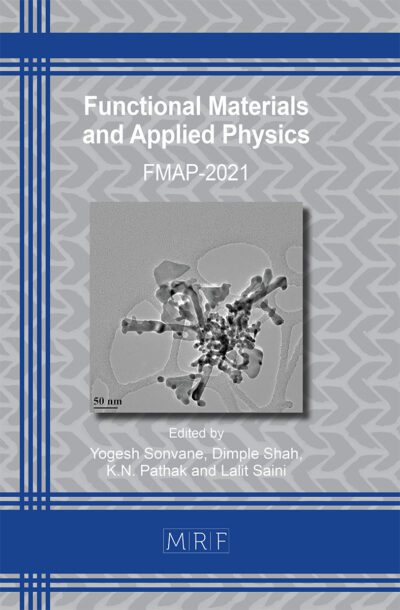Mechanical and microstructural analysis of Ti-6Al-4V material in a wide range of superplastic forming conditions
Alexander Sancho, Paranjayee Mandal, Craig Knowles, Diego Gonzalez
download PDFAbstract. In order to accurately define the superplastic forming (SPF) conditions of Ti-6Al-4V material, an understanding of the stress-strain behaviour, the initial microstructure, and their evolution during superplastic deformation are required. Ti-6Al-4V material with microstructure beneficial for SPF was superplastically tested according to the ASTM E2448 standard considering a wide range of forming conditions in terms of temperatures (750°C – 830°C) and strain-rates (seven strain-rates ranging from 5∙10^(-5) s^(-1) to 〖5∙10〗^(-2) s^(-1)) – some of the tests of the 3×7 matrix are considered “extreme” conditions from an SPF point of view. The material showed improved superplastic behaviour, which was evident from the stress levels and strain-rate sensitivity values as estimated from the flow curves obtained for the different conditions. In comparison with other commercial alloys or results from similar analyses published in the last decades, low stress values and high strain-rate sensitivity (m) values were obtained despite the low temperatures and high strain-rates used in this analysis. The tests were interrupted when 0.5 true strain (65% engineering strain) was achieved followed by quenching, as this was the maximum local strain achieved when forming the component of interest. Samples did not show any sign of premature necking or failure, with the exception of the two most “extreme” cases. Particularly for the lower strain-rates (below 10^(-4) s^(-1)), some level of material hardening associated with a minimum grain growth was observed in the flow curves. In contrast, a noticeable material softening was observed for the higher strain-rate conditions (above 5∙10^(-3) s^(-1)), associated with the microstructural changes occurring due to dynamic recrystallization. These higher strain-rates led to formation of submicron-sized grains, which could have helped in the superplastic response of the material under these strain-rate conditions. Intermediate strain-rates (5∙10^(-4) s^(-1) and 10^(-3) s^(-1)) showed a different type of response in terms of microstructural behaviour (and flow curve outline) depending on the testing temperature. A negligible amount of cavitation was observed in the samples tested under extreme conditions.
Keywords
Superplasticity, Forming, Titanium, Ti-6Al-4V, Microstructure, Tensile, Strain-Rate Sensitivity
Published online , 8 pages
Copyright © 2023 by the author(s)
Published under license by Materials Research Forum LLC., Millersville PA, USA
Citation: Alexander Sancho, Paranjayee Mandal, Craig Knowles, Diego Gonzalez, Mechanical and microstructural analysis of Ti-6Al-4V material in a wide range of superplastic forming conditions, Materials Research Proceedings, Vol. 32, pp 103-110, 2023
DOI: https://doi.org/10.21741/9781644902615-11
The article was published as article 11 of the book Superplasticity in Advanced Materials
![]() Content from this work may be used under the terms of the Creative Commons Attribution 3.0 license. Any further distribution of this work must maintain attribution to the author(s) and the title of the work, journal citation and DOI.
Content from this work may be used under the terms of the Creative Commons Attribution 3.0 license. Any further distribution of this work must maintain attribution to the author(s) and the title of the work, journal citation and DOI.
References
[1] J. Beal, R. Boyer, and D. Sanders, Forming of Titanium and Titanium Alloys. ASM Handbook, Volume 14B: Metalworking: Sheet Forming, S.L. Semiatin, pp. 656-669. https://doi.org/10.31399/asm.hb.v14b.a0005146
[2] L.D. Hefti, Innovations in the Superplastic Forming and Diffusion Bonded Process, J. Mater. Eng. and Perf. 17 (2008) 178-182. https://doi.org/10.1007/s11665-007-9178-0
[3] Y.G. Ko et al., Low-Temperature Superplasticity of Ultra-Fine-Grained Ti-6Al-4V Processed by Equal-Channel Angular Pressing, Metall. and Mater. Trans. A. 37A (2006) 381-391. https://doi.org/10.1007/s11661-006-0008-z
[4] H. Matsumoto et al., Ti-6Al-4V alloy with an ultrafine-grained microstructure exhibiting low-temperature-high-strain-rate superplasticity, Mater. Letters 98 (2013) 209-212. https://doi.org/10.1016/j.matlet.2013.02.033
[5] E. Alabort et al., Alloys-by-design: Application to titanium alloys for optimal superplasticity, Acta Mater. 178 (2019) 275-287. https://doi.org/10.1016/j.actamat.2019.07.026
[6] L. Despax et al., Influence of strain rate and temperature on the deformation mechanisms of a fine-grained Ti-6Al-4V alloy, Mater. Sci. and Eng. A. 790 (2020) 139718. https://doi.org/10.1016/j.msea.2020.139718
[7] J.S. Kim et al., Microstructural analysis on boundary sliding and its accommodation mode during superplastic deformation of Ti-6Al-4V alloy, Mater. Sci. and Eng. A. 263 (1999) 272-280. https://doi.org/10.1016/S0921-5093(98)01157-5
































